VI Reading and Comprehension
Exercise 15. Look through the text B.
Notes:
1.gum Arabic-гуміарабік
2. colour - (тут) фарба
Text B Painting media
Fresco painting is a technique in which the artist paints on a plastered wall while the plaster is still damp. An artist who paints a wall picture on dry plaster uses a process called secco painting. Fresco artists decorate both inside and outside walls. Fresco painting is especially well suited to decorating large walls in churches, government buildings, and palaces. A fresco, unlike many other painting techniques, has no glossy shine. A shine would make a fresco difficult to see from certain angles.
Water colour painting can be done in two major techniques – transparent water colour and gouache. Transparent water colours are paints made of pigments combined with a gum Arabic binder. An artist using this technique lightens the colours by adding water to them. Gouache paint is also made with a gum Arabic binder/ but during the manufacturing process, a little white pigment or chalk is added to make the paint opaque. An artist using the gouache technique makes the colours lighter by adding white paint to them.
Pastelsare coloured chalk sticks. Many artists who draw especially well like to work in pastel because they can use the stick like a pencil while producing brilliant effects of colour. Pastel paintings are noted for their delicate colours.
Temperais sometimes used as a general term for water colours. However, the word tempera more often refers to a technique in which egg yolk is the binder. In tempera painting lines are sharp and clear. Tones are bright, and exact and strong.
Oil paintis made by mixing powdered pigments with a binder of vegetable oil. Certain features of oil paint make it popular with artists who want to show the natural appearance of the world around them. Oil paint dries slowly. Therefore, the artist has time to blend the strokes into each other carefully and to adjust the colour mixtures to reproduce natural appearance. Oil paint – even when applied thickly – does not crack so easily as does water paint or egg tempera. As a result, the painter can apply oil paint in varying thicknesses to produce a wide range of textures.
Encaustic painting, also known as hot wax painting, involves using heated beeswax to which colored pigments are added. The liquid/paste is then applied to a surface—usually prepared wood, though canvas and other materials are often used. The simplest encaustic mixture can be made from adding pigments to beeswax. Metal tools and special brushes can be used to shape the paint before it cools.
Today, artists most frequently use two synthetic resins – acrylic and vinyl. These paints can be used on a wide variety of surfaces, including cardboard, paper, fabric, and wood. Colours can be painted over each other rapidly because they dry and form a waterproof surface almost immediately. An artist using acrylic or vinyl paints can produce effects that cannot be produced with traditional painting materials.
VII Language
Exercise 16. Match the word combinations in column A with their equivalents in column B:
| A | B |
| 1. to decorate inside and outside walls 2. to lighten the colour 3. to make the paint opaque 4. to see through a layer of the colour 5. to work in pastel 6. to produce a wide range of textures 7. to show natural appearance 8. to blend the strokes 9. to adjust the colour mixtures 10.to crack easily | a. легко тріскатися b. показувати натуральну видимість d. прикрашати внутрішні та зовнішні стіни e. упорядковувати суміш фарб f. робити фарбу непрозорою g. сполучати мазки h. працювати з пастеллю i. дивитися скрізь шар фарби j. виробляти широку численність текстур k. посвітлішати колір |
Exercise 17. Match painting media in column A to their definitions in column B:
| A | B |
| 1. fresco painting 2. secco painting 3. transparent water colour painting 4. pastel 5. tempera 6. oil paint 7. encaustic painting 8. acrylic and vinyl 9. gouach | a. using heated beeswax to which colored pigments are added b. paint made with a gum Arabic binder/ but a little white pigment or chalk is added to make the paint opaque. d. made by mixing powdered pigments with a binder of vegetable oil. e. synthetic resins f. painting a wall picture on dry plaster g. paints made of pigments combined with a gum Arabic binder. h. coloured chalk sticks. i. refers to a technique in which egg yolk is the binder. j. painting on a plastered wall while the plaster is still damp. |
VIII Text understanding
Exercise 18. Answer the questions:
- What is the difference between fresco painting and secco painting?
- What is the process of encaustic painting?
- Why do artist most often use acrylic and vinyl?
- What are two major techniques of water colour painting? Describe them.
- Why do artists like to work in pastel?
- What are lines and tones in tempera?
- What is the peculiarity of oil paint?
Exercise 19. Define the type of technique of paintings. What techniques were not mentioned in this text?
| A | B | C |
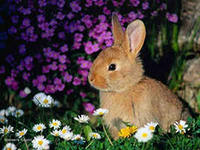 | 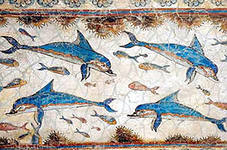 | 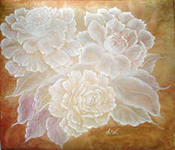 |
| D | E | F |
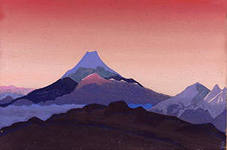 | 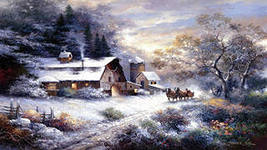 | 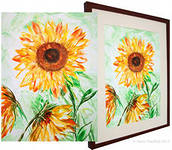 |
| G | H | J |
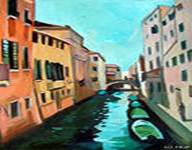 | 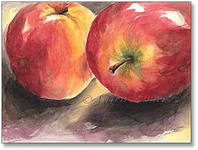 | 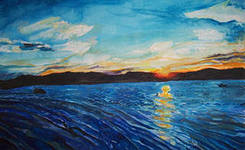 |
| K | L | M |
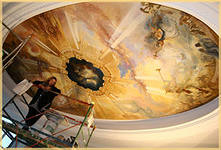 | 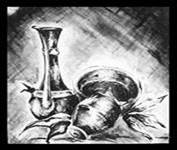 | 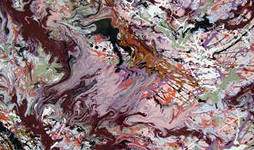 |
IX Oral Practice
